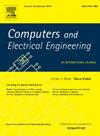Video anomaly detection using transformers and ensemble of convolutional auto-encoders
IF 4.9
3区 计算机科学
Q1 COMPUTER SCIENCE, HARDWARE & ARCHITECTURE
引用次数: 0
Abstract
Video anomaly detection is the identification of outliers deviating from the norm within a series of videos. The spatio-temporal dependencies and unstructured nature of videos make video anomaly detection complicated. Many existing methods cannot detect anomalies accurately because they are unable to learn from the learning data effectively and capture dependencies between distant frames. To this end, we propose a model that uses a pre-trained vision transformer and an ensemble of deep convolutional auto-encoders to capture dependencies between distant frames. Moreover, AdaBoost training is used to ensure the model learns every sample in the data properly. To evaluate the method, we conducted experiments on four publicly available video anomaly detection datasets, namely the CUHK Avenue dataset, ShanghaiTech, UCSD Ped1, and UCSD Ped2, and achieved AUC scores of 93.4 %, 78.8 %, 93.5 %, and 95.7 % for these datasets, respectively. The experimental results demonstrate the flexibility and generalizability of the proposed method for video anomaly detection, coming from robust features extracted by a pre-trained vision transformer and efficient learning of data representations by employing the AdaBoost training strategy.
利用变换器和卷积自动编码器集合进行视频异常检测
视频异常检测是在一系列视频中识别偏离正常值的异常值。视频的时空依赖性和非结构化特性使得视频异常检测变得复杂。许多现有方法无法准确检测异常,因为它们无法有效地从学习数据中学习,也无法捕捉远距离帧之间的依赖关系。为此,我们提出了一种模型,利用预先训练的视觉变换器和深度卷积自动编码器集合来捕捉远距离帧之间的依赖关系。此外,我们还使用 AdaBoost 训练来确保模型能正确学习数据中的每个样本。为了对该方法进行评估,我们在四个公开的视频异常检测数据集(即中大大道数据集、ShanghaiTech、UCSD Ped1 和 UCSD Ped2)上进行了实验,这些数据集的 AUC 分数分别为 93.4%、78.8%、93.5% 和 95.7%。实验结果表明,通过预先训练的视觉转换器提取出的强大特征,以及采用 AdaBoost 训练策略进行的高效数据表示学习,所提出的方法在视频异常检测方面具有灵活性和通用性。
本文章由计算机程序翻译,如有差异,请以英文原文为准。
求助全文
约1分钟内获得全文
求助全文
来源期刊

Computers & Electrical Engineering
工程技术-工程:电子与电气
CiteScore
9.20
自引率
7.00%
发文量
661
审稿时长
47 days
期刊介绍:
The impact of computers has nowhere been more revolutionary than in electrical engineering. The design, analysis, and operation of electrical and electronic systems are now dominated by computers, a transformation that has been motivated by the natural ease of interface between computers and electrical systems, and the promise of spectacular improvements in speed and efficiency.
Published since 1973, Computers & Electrical Engineering provides rapid publication of topical research into the integration of computer technology and computational techniques with electrical and electronic systems. The journal publishes papers featuring novel implementations of computers and computational techniques in areas like signal and image processing, high-performance computing, parallel processing, and communications. Special attention will be paid to papers describing innovative architectures, algorithms, and software tools.
 求助内容:
求助内容: 应助结果提醒方式:
应助结果提醒方式:


